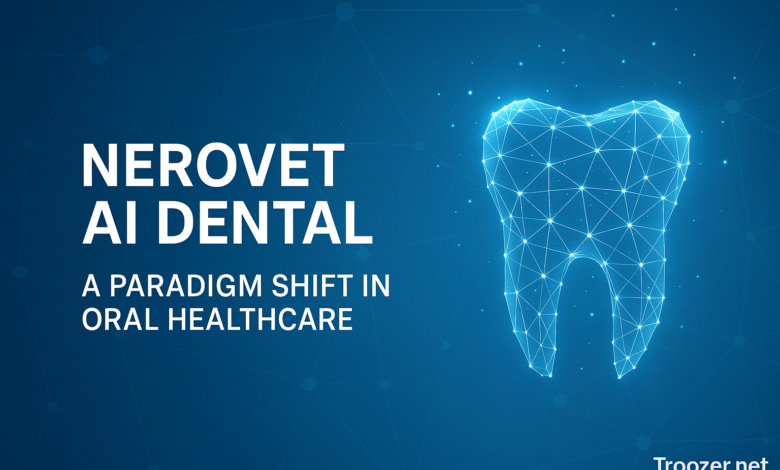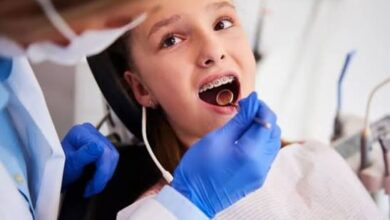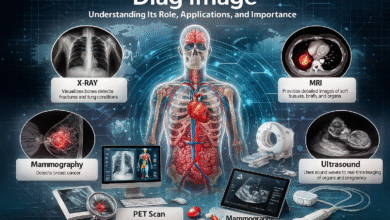Nerovet AI Dental: A Paradigm Shift in Oral Healthcare

In recent years, artificial intelligence (AI) has begun to reshape many medical fields; dentistry is no exception. Among the emerging innovations, Nerovet AI Dental (sometimes referenced as “Nerovet AI Dentistry”) is gaining attention as a platform that promises to augment diagnostic accuracy, speed up workflows, and support preventive care strategies in dental clinics and academia.
Nerovet AI Dental pairs machine learning, computer vision, and domain-specific dental data to analyze diagnostic images (such as intraoral X-rays, panoramic radiographs, bitewings, perhaps even CBCT scans) and patient histories, with the goal of providing actionable insights, highlighting anomalies, and helping dentists make more informed decisions.
How Nerovet AI Dental Works: Key Technologies and Features
-
Image Analysis and Pattern Recognition
The engine behind Nerovet AI is a convolutional neural network (CNN) trained on a large dataset of annotated dental images. The network learns to detect and localize common pathologies — such as caries (cavities), periapical lesions, bone loss, root resorption, and other abnormalities. It can overlay suspected regions onto the radiograph with confidence scores. -
Predictive Modeling and Risk Assessment
Beyond pure image interpretation, Nerovet AI Dental incorporates predictive analytics: it evaluates risk factors (patient age, prior history, genetic predispositions, oral hygiene habits) to anticipate which teeth or regions are more likely to develop disease. This shift from reactive to proactive dentistry is often cited as one of its strengths. -
Automated Report Generation & Workflow Integration
Once processing is complete — typically in seconds — the system generates a summary report, including annotated images, predicted diagnoses, confidence levels, and suggested next steps. These reports can be exported or shared within a clinic’s workflow (e.g. via DICOM, PDF). Some versions support web-based upload of images (JPEG, PNG) for immediate AI analysis. -
Educational & Research Tools
Because of its ease of annotation and ability to highlight pathology, Nerovet AI Dental is positioned as an educational tool for dental students and as a resource for research projects analyzing imaging patterns in large populations. -
Global Accessibility & Speed
The system is often promoted as being able to produce results in a matter of seconds (e.g. < 3 seconds) with detection accuracies claimed in the 90-plus percent range. It is marketed as accessible across many countries, facilitating remote review or teledentistry setups.
Benefits & Value Proposition for Dental Practices
-
Improved Diagnostic Confidence & Consistency
Human error, fatigue, or observer variability are real challenges in radiographic interpretation. An AI system like Nerovet can serve as a “second set of eyes,” especially in subtle or borderline cases, potentially flagging lesions a clinician might miss. -
Faster Turnaround & Efficiency
The ability to analyze images rapidly frees up clinician time. Rather than waiting or doing manual annotation, the system can pre-process images for the dentist to review, accelerating patient throughput. -
Prioritizing Care
By quantifying confidence and risk, Nerovet AI Dental may help dentists triage cases: for example, identifying which radiographs demand immediate attention (high-risk findings) vs routine follow-up. -
Educational Support
For students and trainees, annotated AI feedback helps in learning to identify pathological features, compare with “ground truth,” and understand decision reasoning. -
Remote & Teledentistry Applications
In regions where specialist dentists are scarce, general practitioners or even remote clinics could upload images to Nerovet AI, get a preliminary analysis, and decide whether referral is needed.
Challenges, Limitations & Ethical Considerations
-
Data Quality & Representation Bias
AI models are only as good as their training data. If the dataset lacks diversity (in age groups, ethnicities, dental conditions, imaging equipment), the model may underperform on under-represented populations. -
Regulatory Oversight & Validation
For clinical deployment, Nerovet AI must pass regulatory approvals (e.g. CE marking in Europe, FDA clearance in the U.S.) and undergo rigorous clinical validation (prospective studies, multi-center trials) to prove safety and efficacy. There is limited publicly documented evidence to date (based on current sources). -
Liability & Clinical Decision-making
The AI’s results are advisory. The dentist must retain ultimate responsibility. Disagreements between AI and clinician judgment may create liability or trust issues. -
Integration into Practice & Workflow Adoption
For many clinics, integrating a new AI tool requires IT infrastructure, training, and change management. Resistance to “black-box” AI may slow adoption. -
Patient Privacy & Data Security
Uploading radiographs and patient metadata requires compliance with data protection laws (e.g. GDPR in Europe). Secure transmission, anonymization, and informed consent are essential. -
Edge Cases & False Positives/Negatives
AI may fail on rare pathologies, ambiguous images, or artifacts. False positives (flagging healthy tissue as disease) could lead to unnecessary interventions; false negatives may lead to missed diagnoses.
Market Positioning & Comparisons
While Nerovet AI Dental is one of the names being floated, it competes with other AI dental platforms (Overjet, VideaHealth, Pearl, Diagnocat, etc.). Each emphasizes different strengths (speed, specialization, integration, regulatory approval). The differentiator for Nerovet may lie in its speed, accessibility via browser-based platforms, and its claimed coverage across many countries.
In some literature, Nerovet AI is also mentioned in veterinary dentistry contexts (i.e. “Nerovet AI Dental” used for pets). That suggests the potential for adaptation across species.
Use Case Scenario: From Scan to Treatment Plan
To illustrate a real-world workflow:
-
A patient undergoes a set of dental X-rays (bitewing + periapical images).
-
The clinician uploads the images to the Nerovet AI Dental platform.
-
Within seconds, the system returns annotated images highlighting suspected caries on, say, the mesial surface of tooth 16, plus bone loss near tooth 24 with confidence scores (e.g. 92%).
-
The summary report offers suggestions: further close-up imaging, periodontal assessment, or referral to endodontics.
-
The dentist reviews the suggested findings, confirms or revises them, and discusses the findings with the patient.
-
Over time, the dentist logs outcomes (e.g. which flagged lesions turned out to be true positives) — feeding back verified data to improve future performance.
In this way, Nerovet AI serves both as an assistive tool and a learning feedback loop.
Future Prospects & Evolution
-
Multimodal Input
Future versions may combine radiographic images with 3D scans, clinical photos, intraoral scans, and even genomic or microbiome data to create a holistic diagnostic model. -
Adaptive Learning & Federated Learning
The system might evolve via federated learning, where clinics contribute anonymized data to improve the global model without sharing raw patient data. This could help overcome data silos and privacy constraints. -
Real-Time Chairside Assistance
Imagine integration directly into imaging devices or chairside monitors, where as soon as radiograph is captured, AI overlays findings instantly and suggests next steps, reducing pause time. -
Integration with Treatment Planning Tools
AI findings could feed directly into prosthetic, orthodontic, or implant planning modules, automating steps further down the workflow. -
Regulation, Standards & Explainability
To gain acceptance, Nerovet AI must build in interpretability: making transparent why it flagged a region (e.g. pixel-level heatmaps). Additionally, adoption of standardized benchmarks and validation protocols will help build trust.
Read More: Hormita: Pioneering the Future of Smart Technology and Human-Centric Innovation
Conclusion
Nerovet AI Dental is an ambitious entrant in the growing field of AI-assisted dentistry. By combining rapid image analysis, risk prediction, and automated reporting, it has the potential to reshape how dentists diagnose, prioritize, and educate. However, its long-term success depends not merely on technical sophistication but on clinical validation, integration into real workflows, regulatory compliance, and earning the trust of practitioners and patients.



